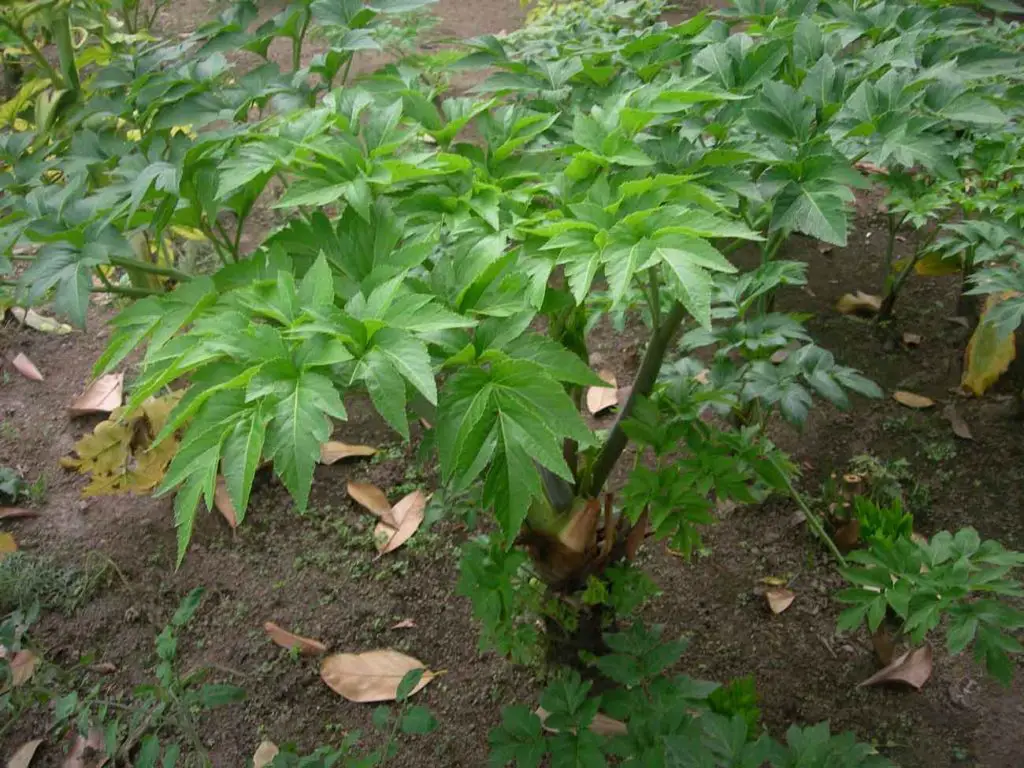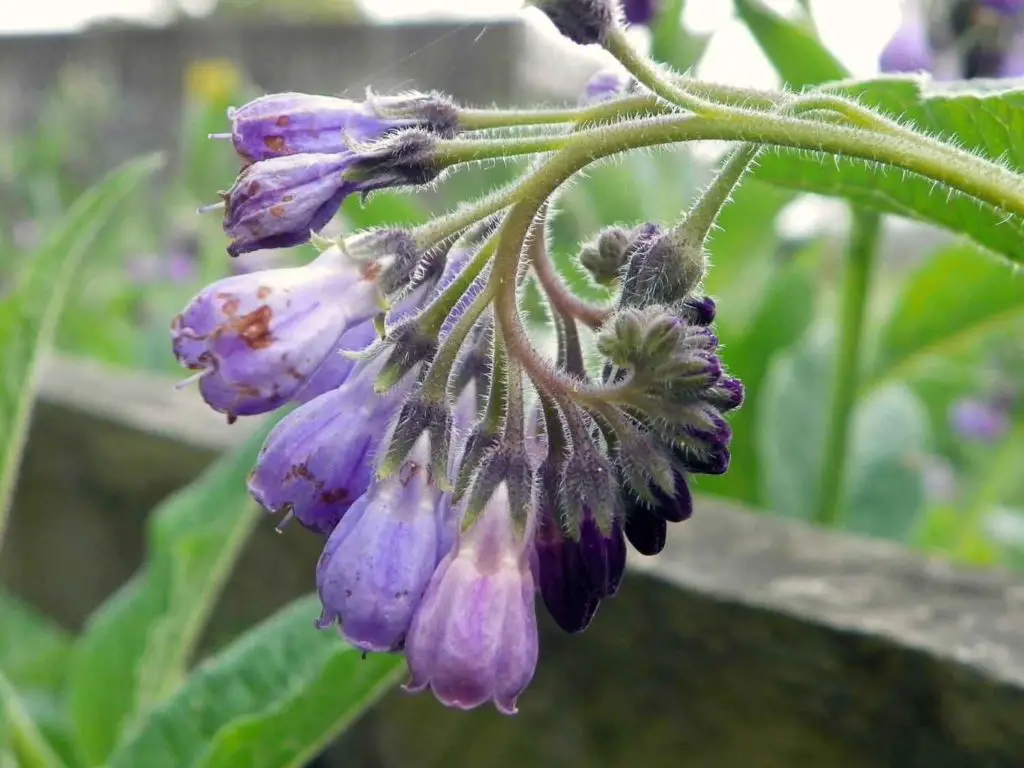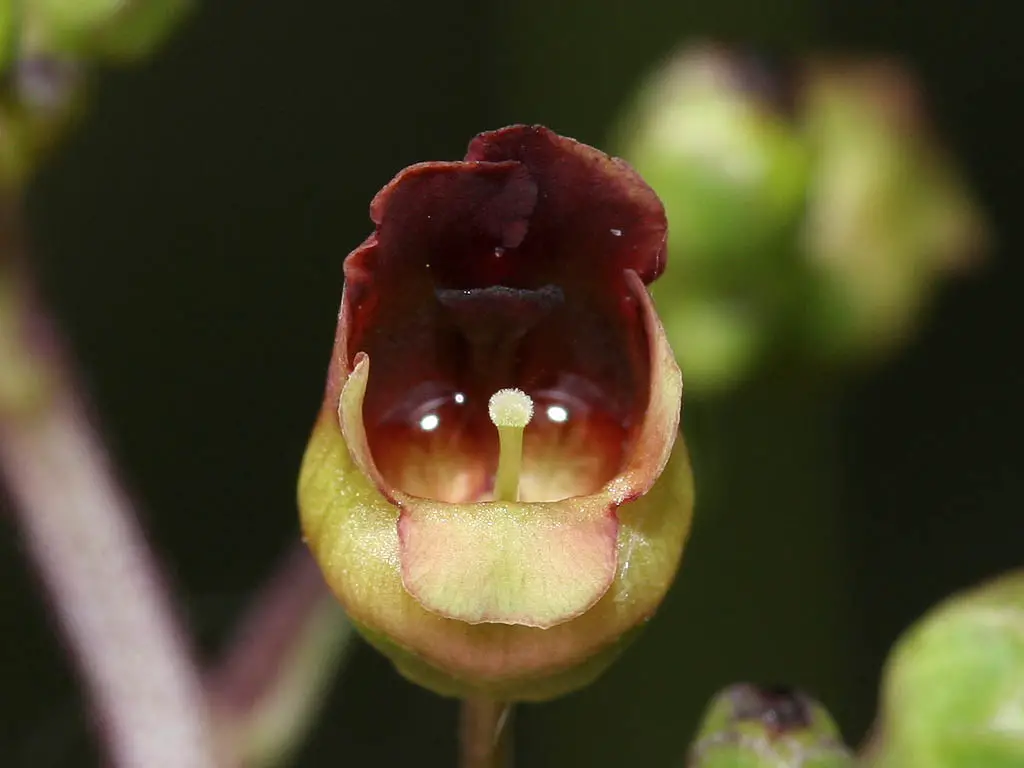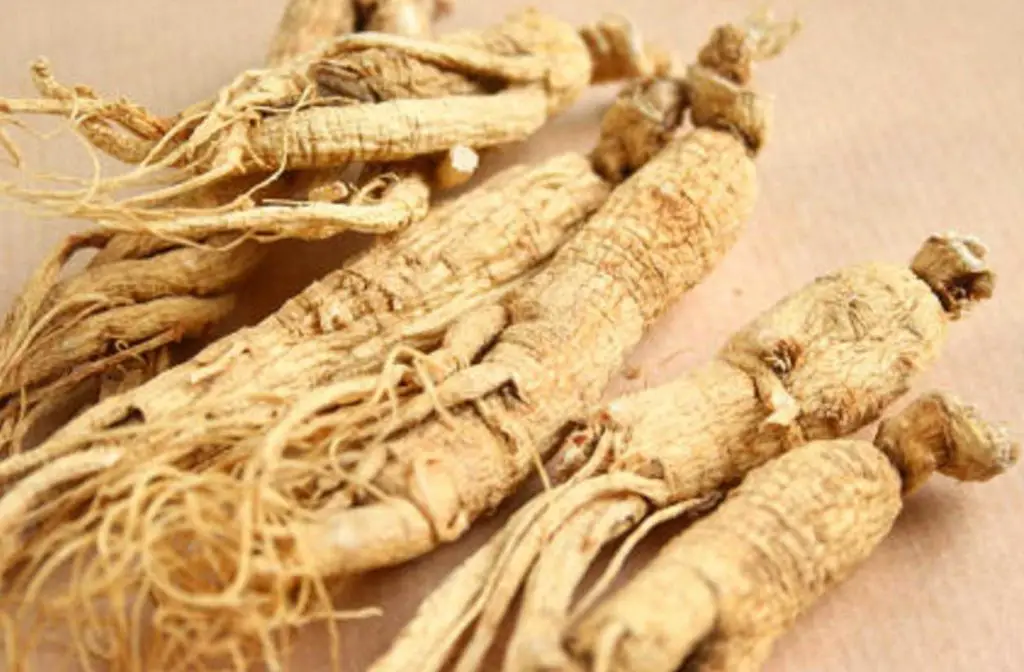What is Ashitaba?
Ashitaba is a specific species in the angelica family. Its Latin name is angelica keiskei. Its name references the ability to prolifically grow in less than ideal areas with little to no intervention from any cultivator or gardener. It is noted for its hardiness, fecundity and ability to regrow quickly after being harvested or injured. It is an herb that is grown and cultivated primarily in all types of soil in central and Southern Japan where it has a history of being a primary ingredient in folk medicine.
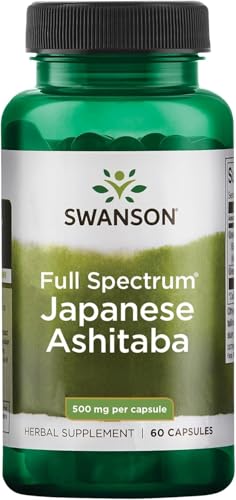
The physicality of Ashitaba is not unlike that of other plants in the angelica genus. It generally grows up to lengths of four feet high. The leaves are lush and regenerate quickly. The stem is woody. The leaves, stem and roots emit a sap known as chalcones. Chalcones can be identified by its yellow color and viscous consistency. This substance is the primary source of many of Ashitaba’s purported health benefits and treatments.
Ashitaba has a long history of being used for both medicinal and culinary purposes. It is not unusual to find it as an ingredient of certain sweets and teas as well as serving as an ingredient in more savory dishes such as noodles. More recently, researchers have been impressed by the amount of anti-oxidants that could be found in the plant. The amount of anti-oxidants exceed that of foods publicized for their anti-oxidant content such as soy products, red wine and even green tea.
Although its name translates to “Tomorrow’s Leaf” in Japanese, it is colloquially known by many as the “longevity herb”. Only a few aspects of Ashitaba’s purported attributes have been officially tested. It still remains a treatment for many ailments and is quickly becoming a favorite option of those seeking natural alternatives to their current medicinal routine.

Ashitaba Benefits and Uses
Anemia/Blood Health
Herbalists claim that one of the many virtues of Ashitaba is its ability to oxidize the bloodstream and increase the red blood cell count in the body. It is speculated that the plant’s high content of vitamin B12 and chlorophyll are the primary sources that contribute to this. Blood health is a well-known benefit of a healthy intake of vitamin B12 and herbalists surmise that the chlorophyll assists in the increased formation of hemoglobin, causing a marked improvement in heart health and the delivery of more oxygen to body tissues. However, all forms of testing regarding this potential use of Ashitaba are limited. Physicians believe that more data is required in order to establish a conclusive resolution.
Anti-Diabetic/Anti-Obesity
Research has indicated that compounds found in Ashitaba (primarily in chalcones) may have a positive effect on those suffering from diabetes, obesity and obesity-related ailments. It is suggested that it does so by regulating the insulin produced by the body. This is a prospect that many researchers, physicians and patients find intriguing, however, the lack of clinical trials tempers that enthusiasm as this means that there is a lack of hard evidence for these claims.
Asthma
It is believed that the antioxidants present in Ashitaba contribute to the management of asthma and other issues with breathing. It does this by managing inflammation that occurs in the airways during the asthma attack. This is credited to the anti-inflammatory nature of the chalcones. It is also believed that it assists in the body’s process of reducing mucus, thus making the airways clearer for breathing. In conjunction with traditional treatments for asthma, Ashitaba is a popular alternative suggested by herbalists. As of yet, very little research has been documented regarding the use of Ashitaba to treat asthma or other breathing related issues.
Bone Health
Many believe that the high percentage of calcium and fiber in Ashitaba in conjunction with the effects it has on the muscles surrounding the bones account for the positive effect it has on the skeletal system. As of this time, no testing exists to verify these claims beyond the positive influence the calcium present in the leaves and stem has on the skeletal system.
Cancer Treatment
In addition to the traditional treatments, herbalists are exploring the potential of harnessing the leaves and the stems of Ashitaba for the treatment of cancer and the alleviation of cancer related symptoms. The chalcones present in Ashitaba have shown to be chemo-preventative in animal testing. These results are promising, but there is a call among medical professionals for clinical trials with humans as test subjects.
Digestive Health
As a woody, herbaceous plant, Ashitaba is high in fiber. The fiber present in Ashitaba provides roughage in feces excreted. As with the airways in the lungs, Ashitaba is also believed to minimize the amount of mucus in the digestive tract. Adequate clinical testing has not been conducted to confirm the use of Ashitaba to improve digestive health. More conclusive data is needed.
Cardiovascular & Cholesterol
Chalcones has been used for the purposes of blood and heart health. Current belief among herbalists who recommend chalcones for the purposes of heart health is that it decreases the level of LDL in the blood stream. This lowers the level of cholesterol, making the person ingesting it less likely to suffer from a heart attack or a stroke. Research still remains to be done on the effectiveness of Ashitaba for the purposes of heart health.
Skin Ailments
Much is made of Ashitaba’s capabilities as a topical medicine. There are even records in existence that describe a balm containing the herb’s sap being applied to successfully treat smallpox. Researchers think this has something to do with the anti-bacterial properties of chalcones, however, all that exists is historical precedent and its popular usage within folk medicine. A conclusive study has yet to be conducted.

Ashitaba Side Effects, Toxicity, Interactions and Safety
Despite the lack of testing done to test the accuracy of claims regarding Ashitaba’s ability to treat various ailments, testing has been done to regard the toxicity of the herb. A thirteen-week test was conducted on both mice and rats. Each test subject was administered an oral dose of a Ashitaba-based solution. The negative results were minimal, although there was a marginal reduction in platelet counts for the rats.
An eye irritant test was also conducted on rabbits to ensure the safety of Ashitaba for the purposes of cosmetics. The test resulted in no damages.
Overall, Ashitaba appears to be a relatively safe alternative and natural choice for anyone looking to expand their options for treatment. However, not enough is yet known about the herb and physicians recommend that pregnant and breast feeding women refrain from taking it just to stay on the safe side.
Should I buy Ashitaba Tea, Powder or Capsules?
Ashitaba offers a diverse array of options for consumption. It can be eaten, boiled into a tea, turned into a dry powder and put into capsules. Due to the plant’s hardiness and ability to grow anywhere with minimal intervention, many people choose to keep their own Ashitaba plants both indoors and outdoors. The leaves can then be harvested for food, but be warned, some complain of a bitter taste if not properly incorporated into a recipe.
Tea is a popular method of consumption for Ashitaba. It can be made either by steeping the dried leaves in boiled water, or by placing a small amount of powder in the water. Those using the powder should be aware that only a small amount of it is needed in order to enjoy the benefits.
As of late, Ashitaba smoothies have become a popular drink for those hoping to get the benefits of the herb while enjoying a meal or a drink of a cooler temperature.

Ashitaba Dosage
As the testing regarding the effectiveness of Ashitaba is limited and physicians are still wary of its medicinal use, there is very little official documentation regarding the recommendation for dosage. That said, many recipes and supplements have recommended guidelines for intake. This generally includes a 500 milligram dose for the powder in both its loose and capsule form at two different times during the day. Use one gram of the leaves, root and stem seeped in 250-300 cubic centimeters of hot water for tea or blended into a mixture for smoothies.
Physicians advice that users take into account their age, health or any other variables before ingesting ashitaba. If uncertain of whether or not to implement ashitaba into a dietary or medicinal routine, it is advised that one should consult their doctor. It is generally recommended that any user follows the guidelines offered on the packaging of any ashitaba product.
References:
http://www.sciencedirect.com/science/article/pii/S0278691515000034
https://www.ncbi.nlm.nih.gov/pubmed/23681764
https://www.ncbi.nlm.nih.gov/pubmed/25891102
https://www.ncbi.nlm.nih.gov/pubmed/27399234
https://www.ncbi.nlm.nih.gov/pubmed/25406632

